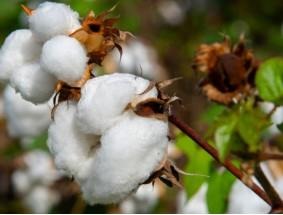The fungus is called Fusarium wilt race 4 and it has impacted Pima cotton, a specific kind of cotton, and its production in parts of California for nearly two decades. More recently, this same wilt was found in Texas in 2017 and in New Mexico in 2019. Fusarium has also impacted farming regions in Uzbekistan. The fungus causes the plants to wilt and die.
To find a way to help cotton farmers, the United States Department of Agriculture (USDA), Uzbek scientists, some U.S. universities, and others in the cotton industry teamed up. This provided an opportunity to aggressively address the Fusarium wilt problem and protect the cotton industry in both countries. The scientists worked together to find a solution to reduce the vulnerability of the cotton crop to the fungus.

Each flower on a cotton plant produces a cotton boll, which is where the fiber is housed and harvested from. Since cotton is such an important crop both in the United States and Uzbekistan, the researchers of this study worked together to find a solution to reduce the vulnerability of the cotton crop to the fungus, Fusarium wilt race 4.
“These groups strengthened collaborations with a common goal: to quickly identify resistant sources to the disease so they can be intercrossed to develop improved varieties of Pima cotton,” says Mauricio Ulloa, a research geneticist with the USDA’s Agricultural Research Service. “I’m happy to say that these efforts paid off.”
The study was recently published in the Journal of Plant Registrations, a publication of the Crop Science Society of America.
The research teams developed new Pima cotton germplasm lines resistant to the disease by crossing varieties from Uzbekistan and the USDA’s cotton germplasm collections. Germplasm is often referred to as a living genetic resource that assists breeders in advancing the diversity of a crop. For crops, they commonly come in the form of seeds or plant tissue.
The three new lines — which go by PSSJ-FRP01, PSSJ-FRP02, and PSSJ-FRP03 — are the product of lines that have been found to be resistant to the disease. They each have slightly different characteristics. Each proved to have a good balance of resistance to the fungus and good fiber quality.
Click here to see more...